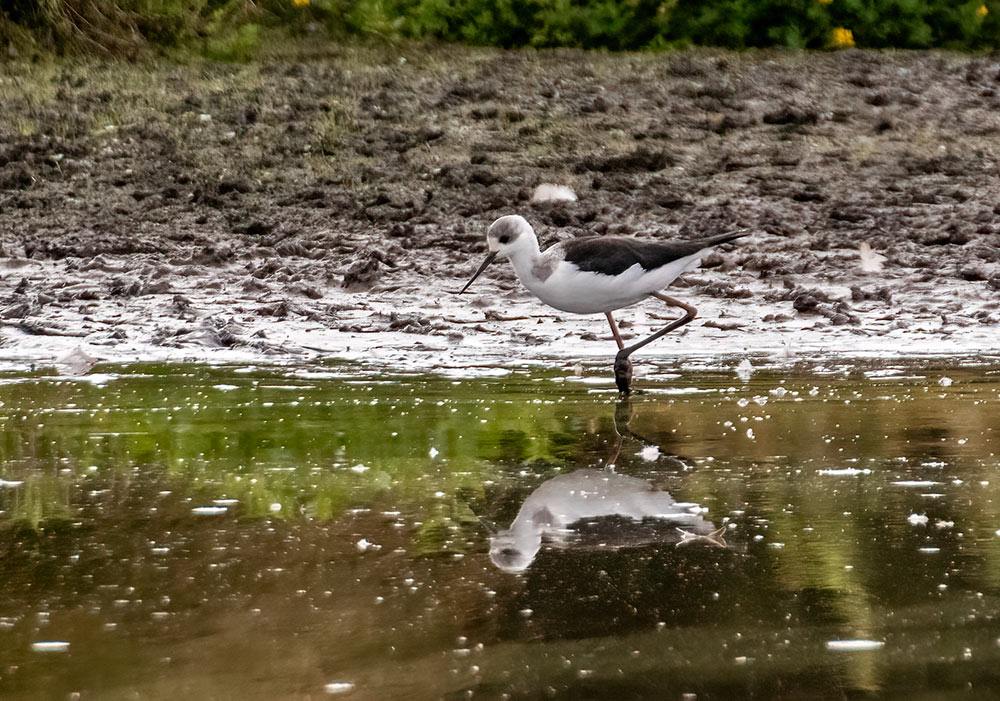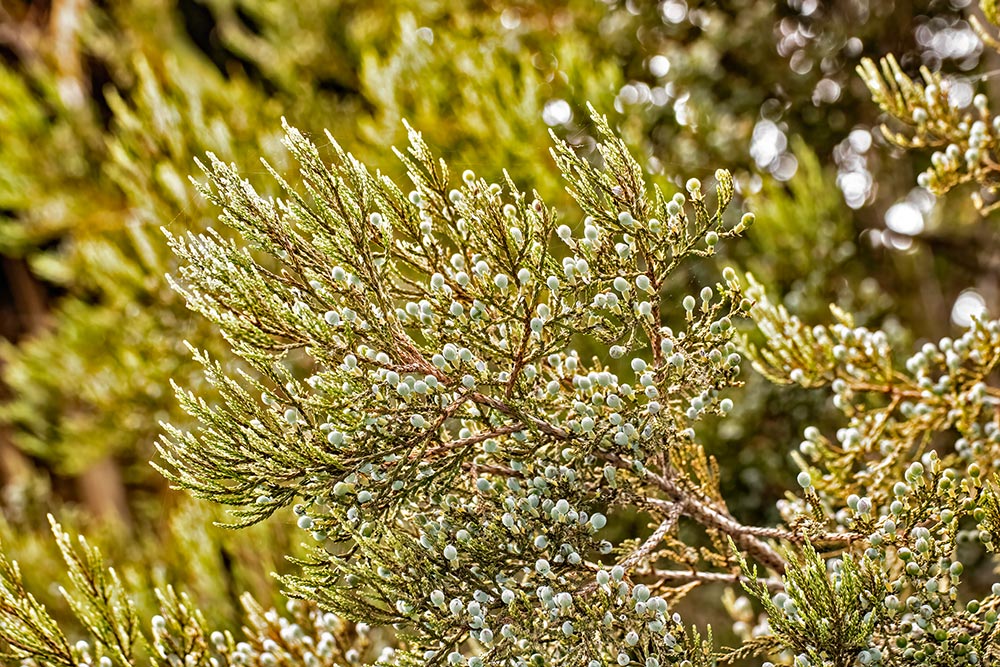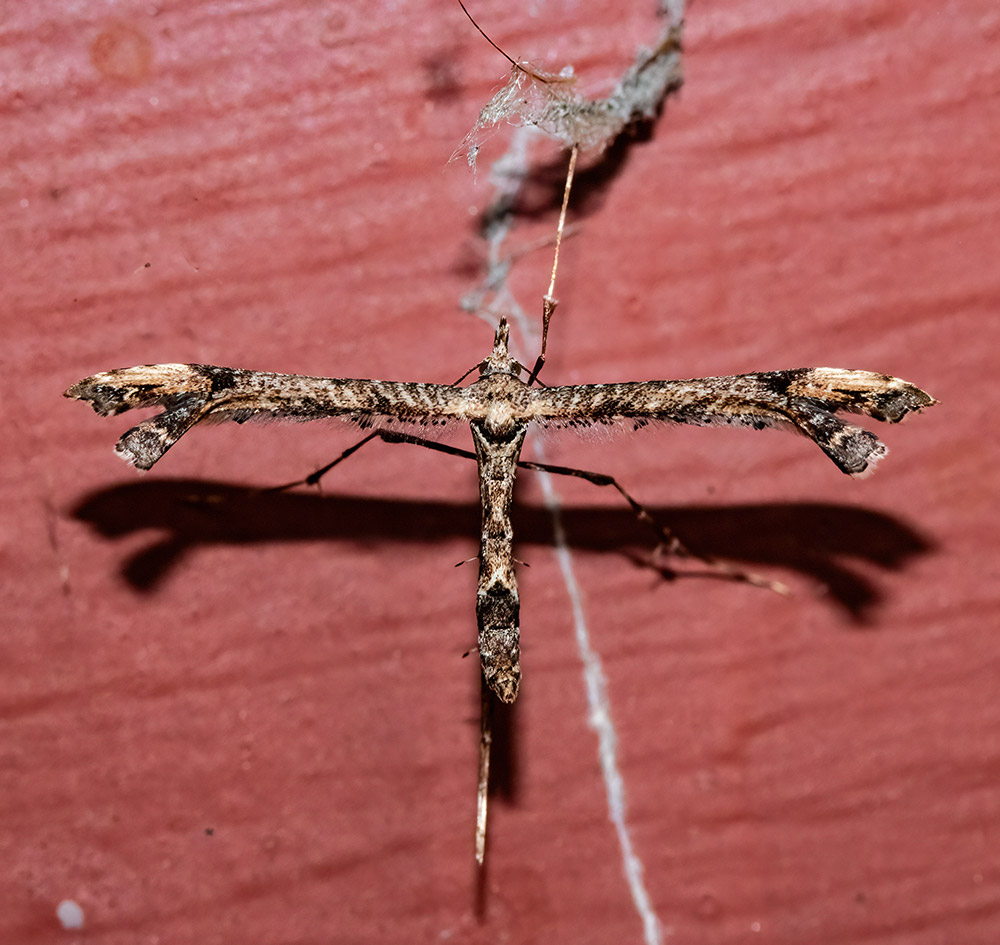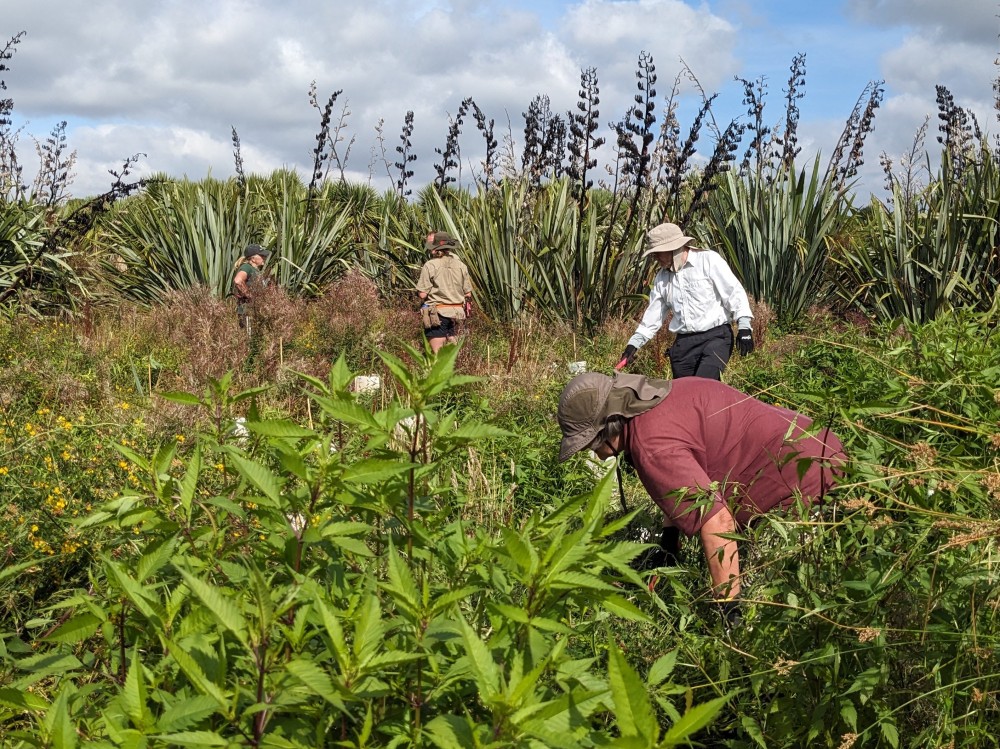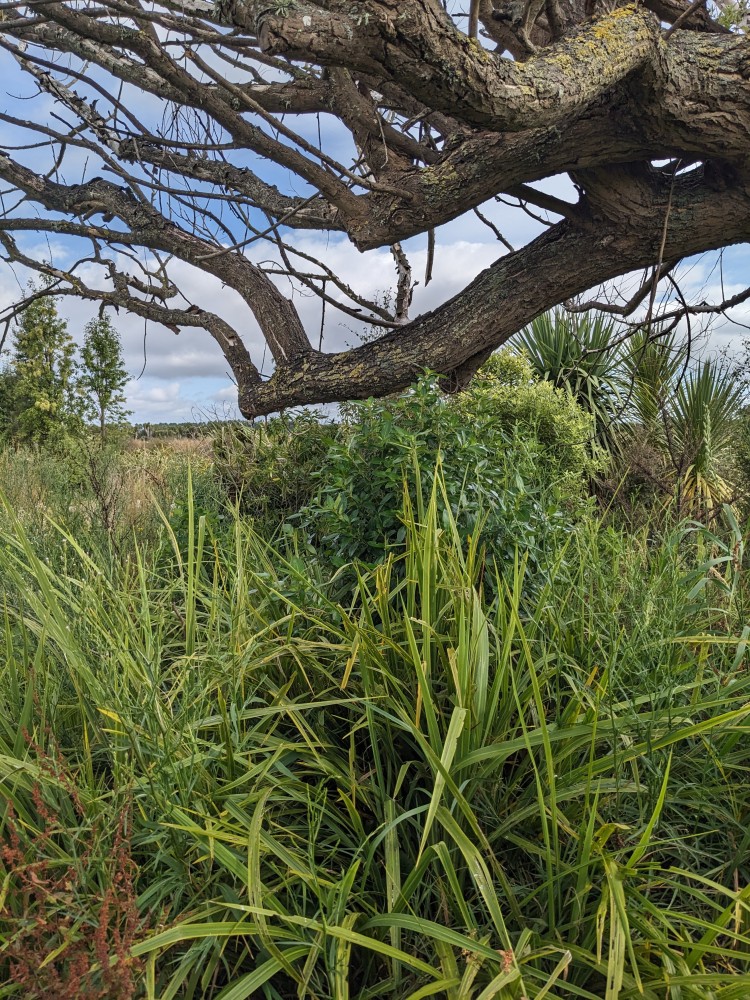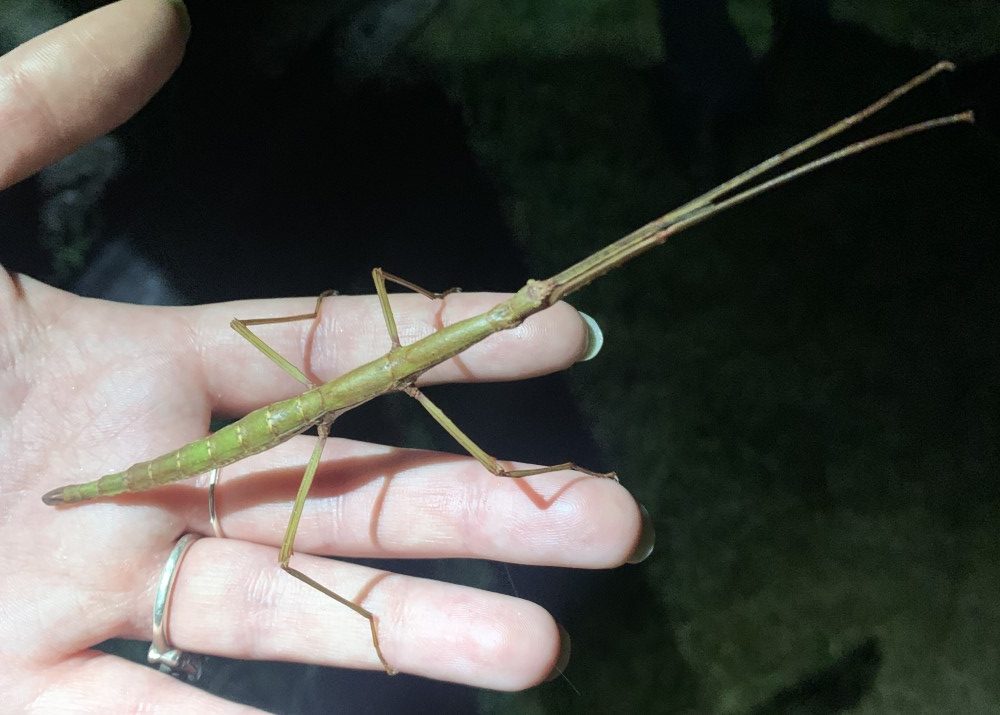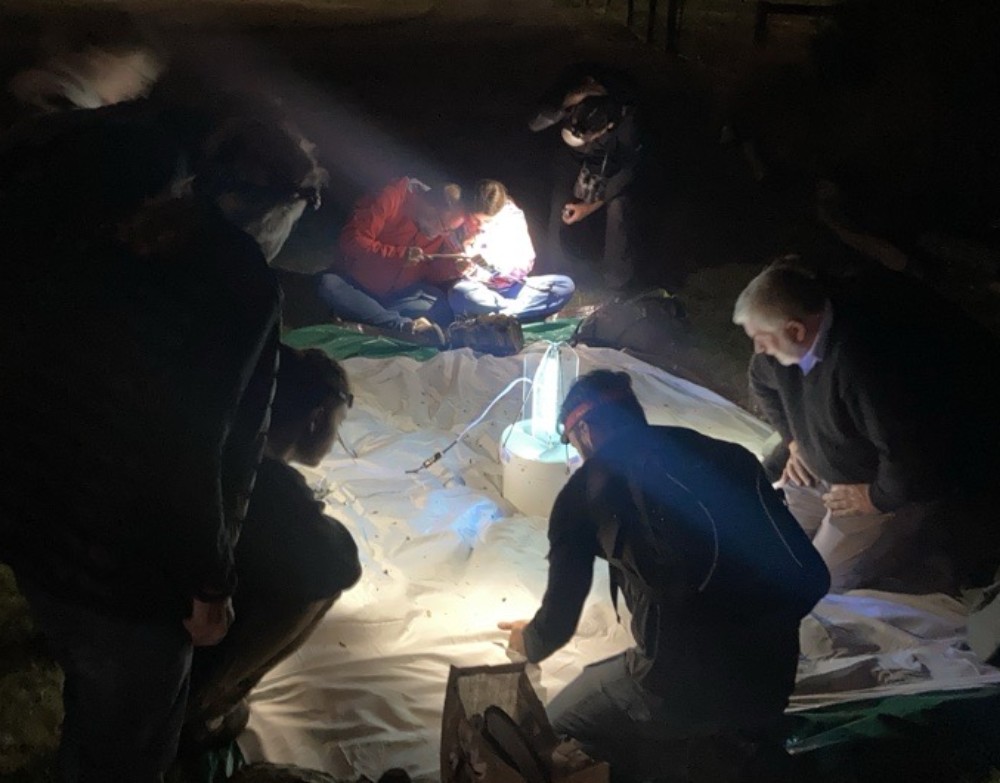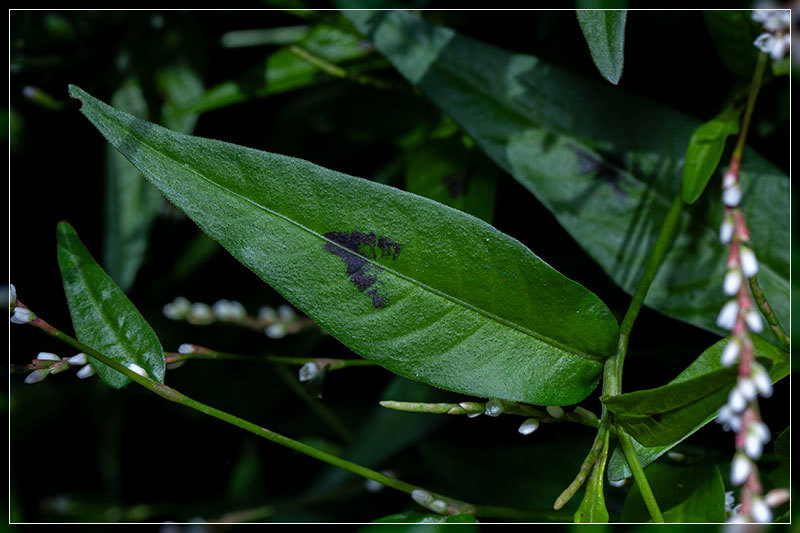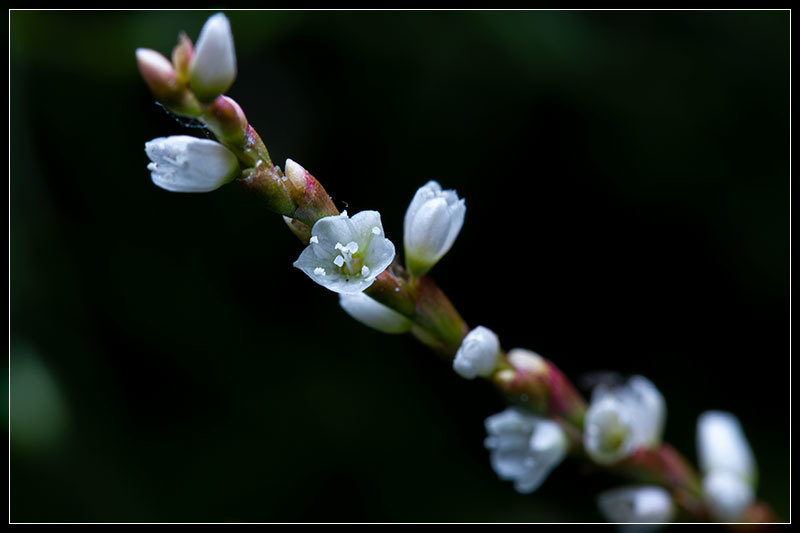All previous newsletters can be found here.
Work Day Reminder, March 16 2024
This month we’ll be releasing plants from the rapid spring and summer growth somewhere around the wetland, maybe even planting a few specimens.
If you arrive late there will be a notice on the Education Centre door explaining where we have gone.
All tools provided. Gumboots are not generally needed in March. Please bring your own gloves if you can, but we have some of them for loan too.
If the weather on the work day is poor and we decide to cancel then an email will be sent by 8am on Saturday morning. So if you think the conditions are marginal, please check your emails.
If you’re reading this on the website and are not on the email list then you can add yourself to it through the form at the foot of the home page. If you change your mind there’s an unsubscribe link in each newsletter.
Latest News
Report on Last Month’s Work Day, 17 February
A calm day with some cloud cover was perfect for 20 volunteers to make the trek to the Southern Woods and check on plantings from our big plant-out in spring 2023.
Most plants were growing well in spite of the harsh, dry conditions of El Nino. In damper spots there was prolific weed growth engulfing plants, with beggar’s tick (Bidens frondosa) being the worst offender. Luckily this can be pulled out easily and we were there before it had formed barbed and easily spread seeds.
Our team made great progress removing other weeds included burdock, lotus, buttercup and the tall noxious plant hairy willowherb (Epilobium hirsutum).
It was pleasing to find numerous self-seeded cabbage trees popping up beneath the branches of a dead crack willow and invertebrates were present in abundance. Pupils from Waitākiri School found katydids and nursery web spiders with their prominent nests on plant stems. Moths and wingless cranefly were also observed.
By late morning the sun had broken through and refreshments were much needed after the walk back to the Ed Centre. Thanks everyone.
Article: Sue Britain, images: Dave Evans
Searching for Invertebrates at Travis
The Canterbury Branch of the Entomology Society of New Zealand had their first event for the year at Travis Wetland on the 27th of February. A range of people, young and old showed up and went searching for all sorts of bugs. One neat find was a population of stick insects, with at least 15 on one narrow-leaved Lacebark tree!
Then a bunch of cool flying insects came to the light trap once it was dark. One moth of particular note was Proteuxoa sanguinipuncta. The species name for this moth sanguinipuncta means blood spotted noctuid, due the the distinctive red spot in the middle of its fore wings.
The evening was a great success and was enjoyed by everyone. It is always exciting to get out and see the amazing diversity of bugs there is.
The observations from the night here can be found here Observations · iNaturalist NZ.
Article and images: Denise Ford
How Knobbly is your Knotweed?
At the February work day I noted large patches of a sprawling plant with small pink/white flowers on slender stems. Colin Meurk identified this as native slender knotweed, also known as willowweed (Persicaria decipiens). This member of the buckwheat family only occurs in wet places, can grow up to 30cm in height and dies back in winter.
Colin told me that a northern hemisphere relative of the plant, Persicaria maculosa, also occurs here and often hybridises with the native species. Later in the morning I found a plant with a more knobbly flower head and Colin confirmed that this would be the exotic species or a hybrid. P. maculosa can grow up to 1m in height and is less fussy about soil types and moisture levels than the NZ species.
Recent DNA work has resulted in both species being placed in the Persicaria genus instead of their previous Polygonum genus. We were lucky to see P. decipiens at the peak of its flowering season.
Article: Sue Britain and images: Grahame
City Nature Challenge events
A message from Sarah Mankelow, CCC Community Partnerships Ranger:
I am excited to announce that the red zone team are running lots of events for this year’s Global City Nature Challenge 26-29 April.
We’d love for you to take part on one or more of our four-day bioblitz events or at one of the many other events happening all over the district.
If you are new to the app, or need some extra support there are also workshops in the lead up to the City Nature Challenge, or feel free to give me a call!
Pennyroyal: A Tiny Mint with a Big History
Pennyroyal (Mentha pulegium) is a member of the mint family, Lamiaceae, native to Europe, North Africa, and the Middle East. It is a small, perennial herb with tiny, oval leaves that emit a strong, minty scent when crushed.
While it shares some visual similarities with its culinary cousins, pennyroyal isn’t commonly used in cooking anymore. This is because it contains a powerful compound called pulegone, which can be toxic in high doses.
Interestingly, pennyroyal has a long history of use in traditional medicine, although its safety and efficacy haven’t been established by modern science. In fact, in New Zealand, the sale of pennyroyal oil is banned due to its potential health risks.
At Travis pennyroyal can be found along the track edges and in the larger wetter paddocks.
Keep an eye out for it’s pretty purple flowers on your next wander around Travis.
Despite its limitations, pennyroyal remains an intriguing plant with a unique story. So next time you encounter this minty miniature, remember its fascinating past, but be sure to admire it from afar – and definitely not ingest it.
Article: curated by Grahame, images: Grahame
Images from Grahame
